
Cubic Feet/Sec.
2015
Cubic Feet/Sec.
34 Years in the Grand Canyon
108 Seiten
18×23 cm
soft-bound, Klappeinband
ISBN 978-3-902993-12-0
Um ein Buch zu bestellen, senden Sie mir bitte eine E-Mail.
Cubic Feet/Sec. dokumentiert 3 Jahrzehnte, in denen ich mit meinem Vater mit dem Boot durch den Grand Canyon gereist bin. Auf jeder Reise füllten Tausende von Kodachrome-Bildern ein Fach nach dem anderen, während wir sorgfältig Diashows bearbeiteten, um sie unseren Freunden und Verwandten zu zeigen. Obwohl ich mir sicher bin, dass die meisten Leute, die unsere Shows sahen, mit einem Gefühl der Begeisterung nach Hause gingen, konnte ich mich des Eindrucks nicht erwehren, dass die Fotografie nie das erreichen würde, was ich mir von ihr erhoffte. Dieses Scheitern liegt natürlich nicht an der Fotografie, sondern an mir und meinem mangelnden Verständnis dafür, was sie niemals tun kann…
Erst vor kurzem, als ich mich der Aufgabe stellte, die Tausenden von Bildern zu sortieren und sie als Ganzes zu sehen – als eine vollständige Reise und nicht als Fragmente vergangener Jahrzehnte -, sah ich, wie die Erinnerungen und Abenteuer in eine einzige Geschichte, eine einzige Reise mündeten. Plötzlich machte es Sinn, diese neue Bearbeitung, bei der die Zeit aus dem Fenster geworfen wird und der Canyon die einzige Konstante ist. Dies ist schließlich die Diashow, die wir nie machen konnten.
scroll down for an interview at Urbaunautica by Bärbel Praun


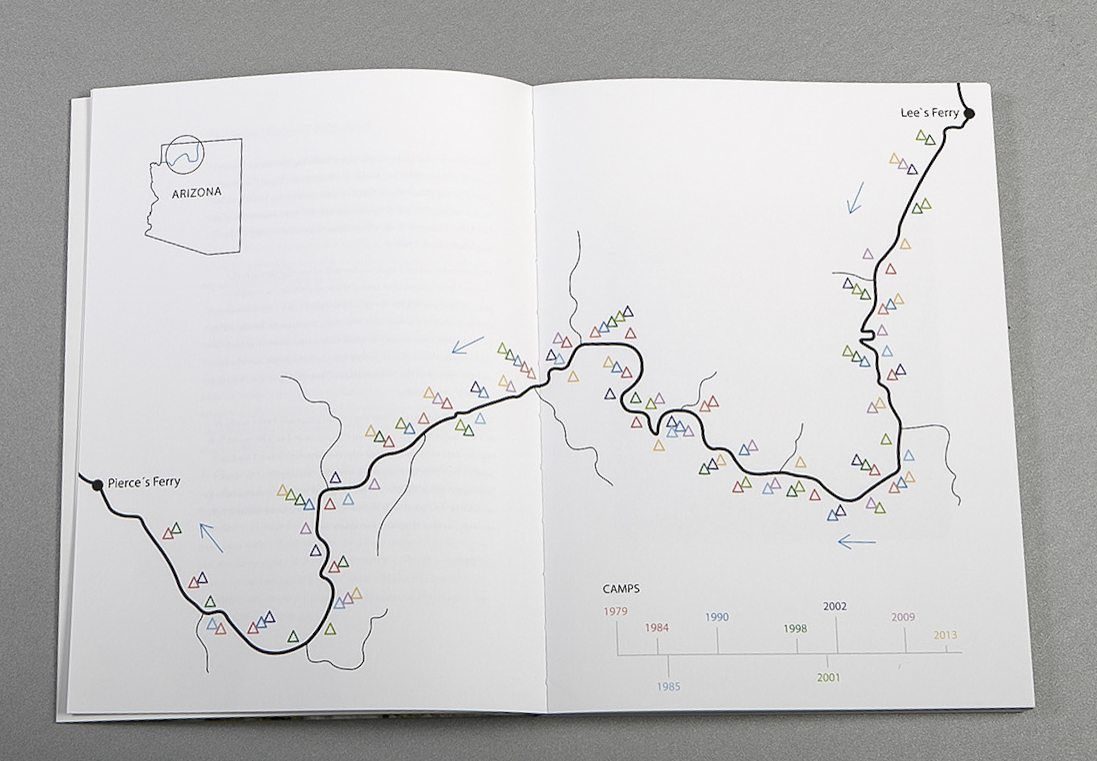
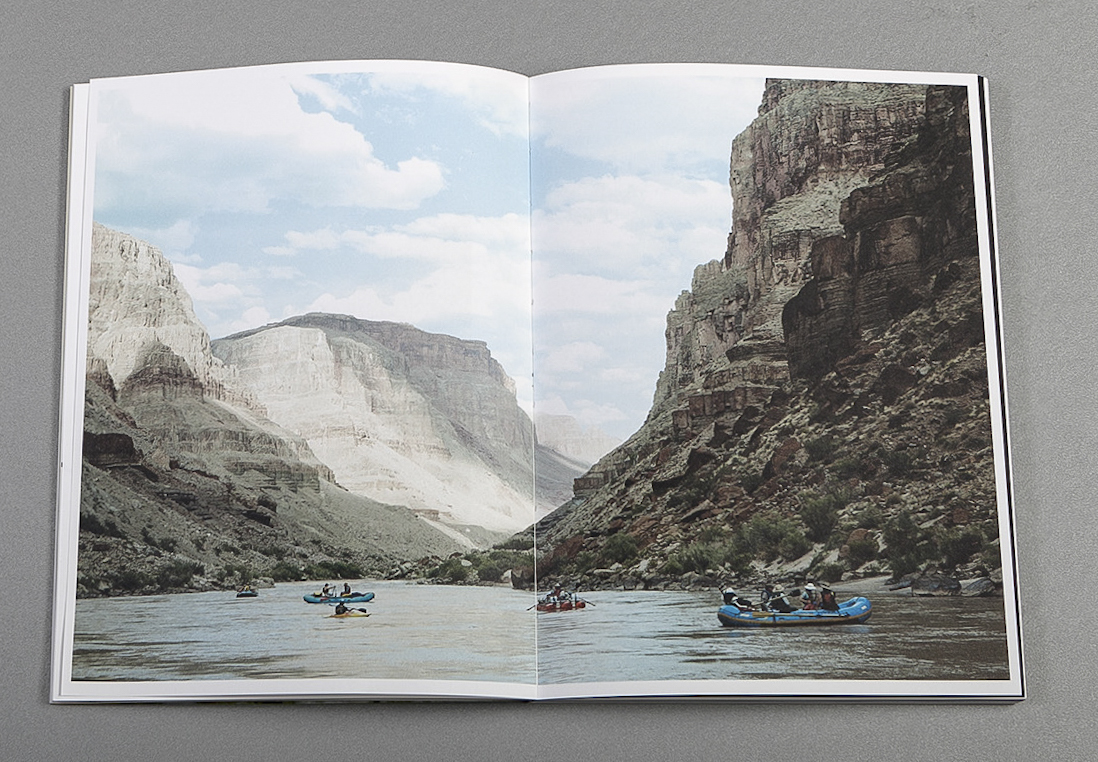

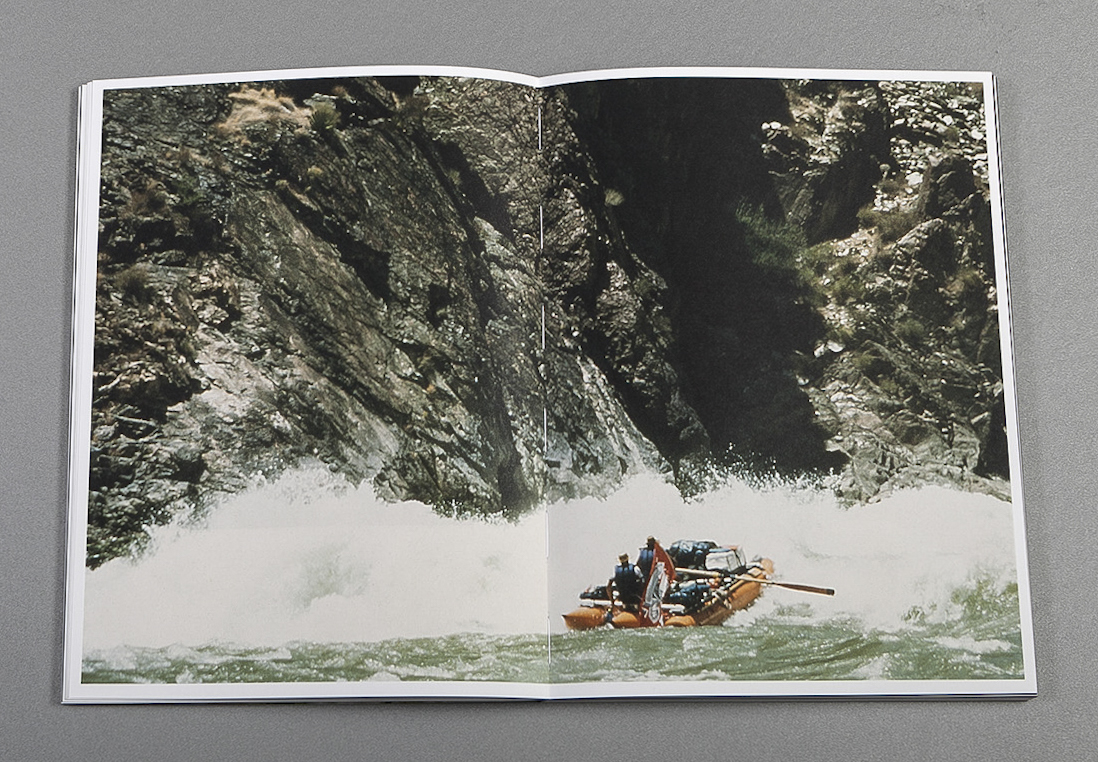
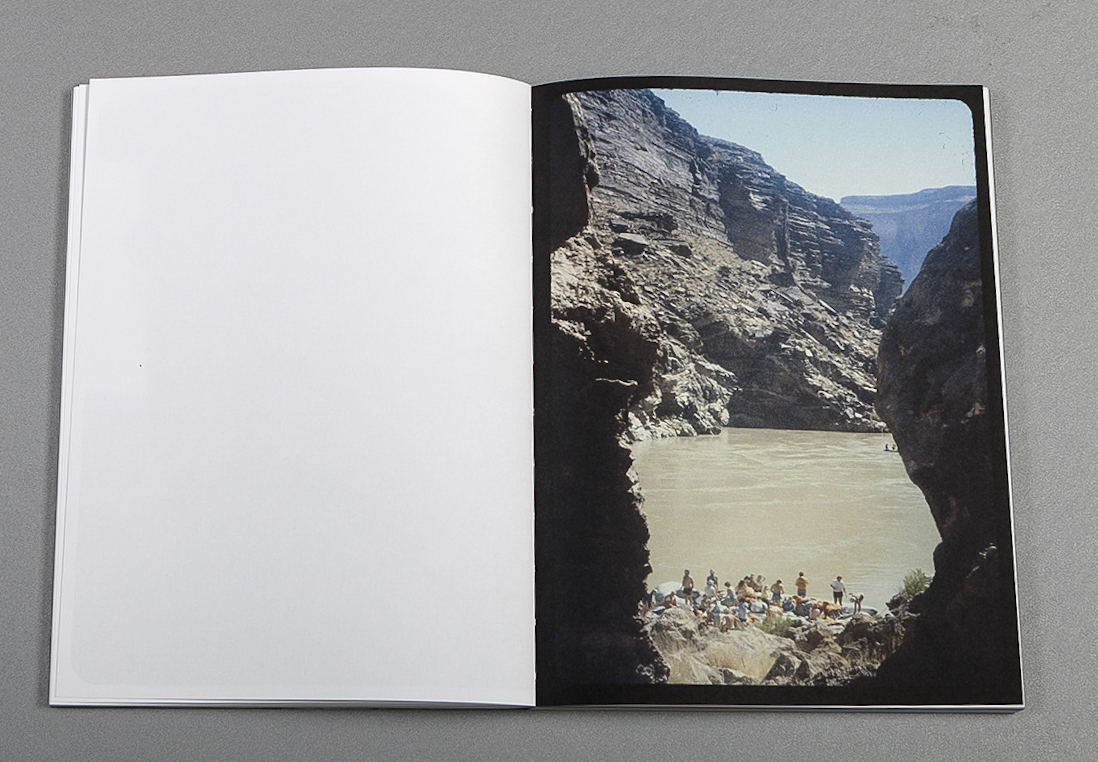

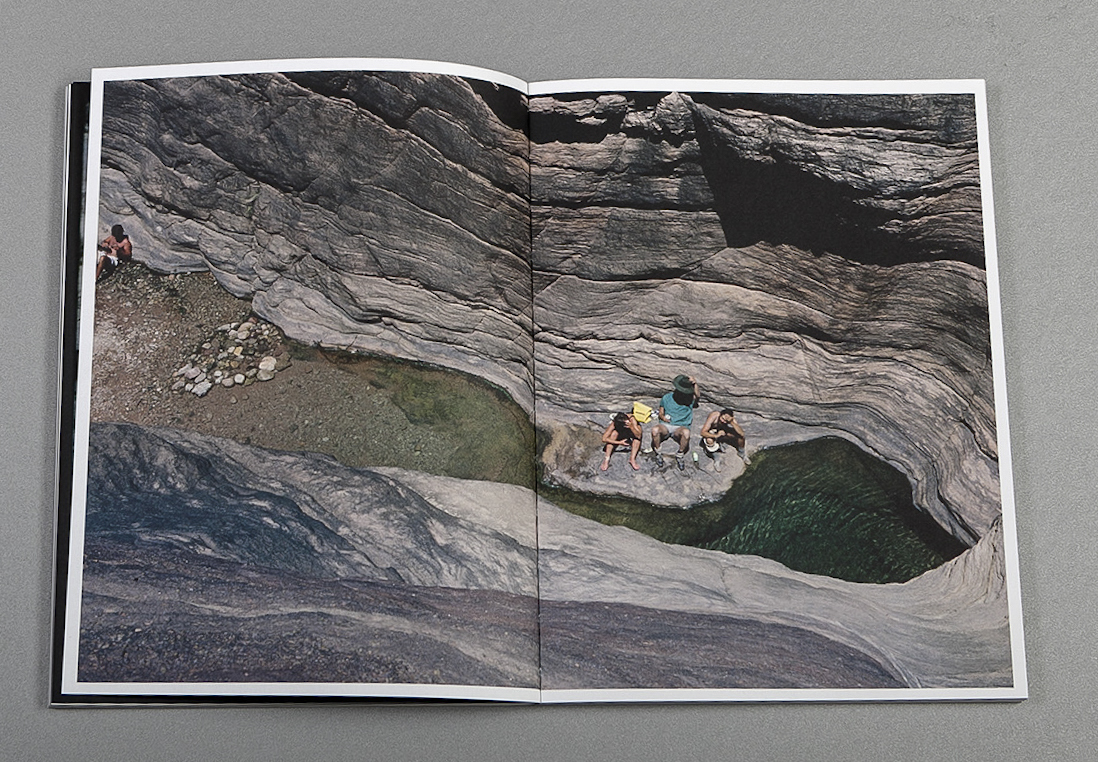





CUBIC FEET/ SEC. – INTERVIEW
A new book of yours has been published recently, also you have a group show in Vienna right now showing excerpts of your series Highley and Haboob, congratulations! Can you tell us a little what the story is about in your latest book Cubic Feet/Sec?
34 years ago when I was 9 years old my father and I went rafting through the Grand Canyon. For this trip I was given my first camera from my father, a Kodak Instamatic 110 and 3 cartridges of film to document the trip. This trip was so monumental for my father that he decided that white-water rafting would become his passion and I had the luck of growing up on the rivers from Arizona to Canada. Nothing compares though to the Grand Canyon and I was lucky enough to raft this part of the Colorado River with my father and friends 9 times in the last 34 years. Each trip was photographed, each time trying to catch the essence of the place, which we all know photography can’t do. This edit consist of images from all 9 trips, geographically in the right order but with time thrown out the window; on one page I am 11 years old, on the next I am 45, then 16. The idea is to explore time on 2 levels – the Grand Canyon never changing, at least not in my lifetime, but at the same time, we see my life unfold at an alarmingly quick rate.
When you open the inside pages of the cover you see an image of a young man in the front, probably you, taking a picture between rocks and water and your father doing the same, focusing on a small waterfall scene, in the back. Both of you have taken many pictures over the years during your trips -your father has even taken notes- attempting to document your experiences in the best way possible – and later confessing your constant failure of telling to your utter satisfaction what you’ve observed, perceived, how you felt like. Please tell us about this process.
We always had these grand and noble visions of being able to share with our friends and family the elements of adventure and awe of the Grand Canyon and for years we really thought we were doing it through slide-shows and photographs which we made on each trip. I’m sure most who saw the slide-shows came away entertained but I was never really happy with how weak photography was as sharing the experience. Now, 25 years into thinking about photography on an entirely different level, and dedicating my life to image making, I realize that it wasn’t photography’s fault but it was my fault for not understanding what photograph couldn’t do. This book is my realization that there is no successful document which we made along the way, but putting it all together like this, and seeing all of the different cameras and stages of my photographic interests, this gets at least close to illustrating this failure.
This book obviously is different from your other ones. One reason might be the fact that you are personally and emotionally involved in another way. Can you tell us something about the process of evolving the book, your approach to content as well as formal aspects?
Of all of my books, this one took the longest to edit and conceive, which is funny because I have been looking at the images for 3 decades at least, one would think I know them by now. The hardest part of the process was not figuring out what I wanted to do but figuring out what I DIDN’T want to do; an archive like this which is so personal can go in so many different ways, many of those ways are much too sentimental, I wanted to avoid this and make something more universal about experience and memory and time passing. I think this book has been in the making since 2009 when I set out to sort all our Kodachrome slides and save them from destruction in cardboard boxes in the garage. Literally thousands of slides were combined with early Instamatic snap-shots, medium format negatives, large-format negatives, even digital GoPro video stills from the last trip in 2013, so the process of getting everything into a form where I could start seeing everything together was, in itself, very complex. Then starts the painful process of separating the memories and the experiences which the photos brought back from the actual photo itself, being able to edit something so personal was actually impossible, I had a lot of help.
If one looks for images of the Grand Canyon online, one finds hundreds of photos that show the enormous dimensions of the area, mostly shot from above, with spectacular, sublime views of a landscape in sundown light. In your book you see your father and yourself right in the middle of the Colorado River, close to the water in a boat, near the cliffs, exploring the landscape by jumping into the water, climbing around in caves. It feels as if you wanted to take us with you on your boat, to share your trips’ adventures in order to experience ourselves on an immediate level. Your archive of your trips must be huge and – I can only guess – also contained some of these classical views I’ve mentioned above. To what extent does the discourse about the perceipton of landscape, landscape as a society’s construct play a role in your projects generally and in Cubic Feet/Sec particularly?
It wasn’t until I was way into the edit that I realized that I wasn’t interested in the classic views of the canyon, I’m sure a lot of people might be disappointed if they are looking for the coffee-table grand canyon book. I think the reason for this is I wanted to highlight the tangible, human part of the story and the caves became a big part as they are these mysterious little hide-aways that you cant see from the rim of the canyon looking in. When you are down there you realize that the view from the top is very abstract, untouchable, but when you are on the river, literally thousands of feet into the earths crust, is this idea of crawling around in small side canyons and caves a very moving experience. Much more physical than staring out at a grand vista.
Rather in the beginning of the book there’s a spread I really like (and which describes a familiar situation for any traveler): two hands holding a map showing the route of the river you are going to journey down. Also the title Cubic Feet/Sec and subtitle ‘The rate at which flowing water is measured in a river’ are hints for your attempt to locate and visualize your experiences and memories. What were your thoughts about that?
The title came out of wanting to find a way of measuring things, and the number of cubic feet of water which have passed through the canyon in my lifetime is astronomical, even inconceivable.
You have already lived in Austria for many years now, most of your projects take place in America, though. Do you consider the distance as useful for your work, does it sharpen your view on things going on in your homecountry?
For sure, I never would have made HIGLEY or HABOOB if I was still living in Arizona, and those are, for me, my most important bodies of work. I simply wouldn’t have noticed Higley, Arizona disappearing if I had been there all of the time. I realized long ago that most all of what I am interested in my work has a very strong, if not always obvious, autobiographical edge, and I think this element has been heightened by the fact that I don’t live in the place, or even the culture, which makes up the landscape of my childhood memories.
Published on Urbaunautica by Bärbel Praun